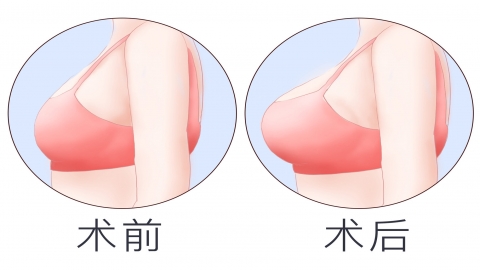Breast augmentation: Autologous fat transfer or breast implants, which is better?
Generally speaking, "autologous" refers to breast augmentation with autologous fat transfer, while "implant" refers to breast augmentation with implants. There is no definitive answer as to whether breast augmentation with autologous fat is better than with implants, or vice versa, as both methods have their own advantages and disadvantages. The choice should be made according to individual circumstances. If breast augmentation is desired, it is recommended to visit a reputable hospital and choose a suitable method under the guidance of a physician. The detailed analysis is as follows:

Autologous fat transfer breast augmentation involves extracting excess fat from other parts of the body, purifying and refining it through processes such as centrifugation, and then injecting the fat particles into the breasts to achieve breast enhancement. The general reference price for autologous fat transfer breast augmentation is 10,000–30,000 yuan per session, with visible improvement usually seen within 1–3 months, although complications such as fat liquefaction and infection may occur. As the fat used in autologous fat transfer comes from the patient's own body, it is highly safe and does not cause immune rejection. Additionally, it feels natural and is indistinguishable from natural breast tissue. However, the fat survival rate varies, and multiple procedures may be required to achieve satisfactory results.
Implant-based breast augmentation involves surgically placing implant materials such as silicone or expanded polytetrafluoroethylene (ePTFE) into the breasts to increase breast volume and improve shape. These implant materials generally have good biocompatibility and stability, can integrate with human tissue, and provide additional support, making the breasts more upright and fuller. The general reference price for implant-based breast augmentation is 8,000–20,000 yuan per session, with visible improvement usually seen within 1–2 months, although complications such as infection and implant displacement may occur. The implant materials used in implant-based breast augmentation are stable and can maintain their shape for a long time. However, surgery is required, which carries certain surgical risks and necessitates a recovery period.
Autologous fat transfer breast augmentation is suitable for individuals who pursue a natural feel and are unwilling to accept foreign material implantation, while implant-based breast augmentation is suitable for those who desire quicker results and have lower requirements for tactile sensation. After breast augmentation, it is important to follow medical advice for post-operative care, maintain a light diet, rest adequately, and thereby achieve better breast enhancement results.










